Prenatal Use of Triptans Does Not Increase Risk of Autism, ADHD in Children
Triptans are often a first-line treatment for migraine and can be used to treat menstrual migraine and cluster headaches.
Prenatal use of triptans does not increase the risk of neurodevelopmental disorders, including autism and attention deficit/hyperactivity disorder (ADHD) in children, according to results from a study published in Neurology.1,2
“These results are encouraging for people with migraine, who may be taking these drugs before they even know that they are pregnant, and this is helpful information for their physicians, who can make more informed decisions about treating people with debilitating migraine attacks,” Hedvig Nordeng, PhD, of the University of Oslo in Norway, said in a news release.1
Triptans are a class of medication used to treat migraine by changing how blood circulates in the brain and how the brain processes pain signals. The drugs are often a first-line treatment for migraine and can be used to treat menstrual migraine and cluster headaches, according to the Cleveland Clinic. They do not prevent migraines, but they can stop a migraine while it is forming. In the 1990s, sumatriptan (Imitrex) was the first triptan approved to treat migraine in the US and Europe.3
In the study, investigators aimed to determine the safety of migraine medication for pregnant individuals. They examined the effects of different intensities and durations of exposure to triptans, both alone and in combination with other migraine medications. The investigators included patients from a nationwide health registry in Norway, including women who had migraines before being pregnant, and followed up with their children for up to 14 years. They included child outcomes such as autism spectrum and behavioral disorders, learning and intellectual disabilities, speech/language and developmental coordination disorders, and ADHD.2
There were 4929 patients included who did not receive medication for migraine and 21,281 who were medicated with triptans in the year before pregnancy. For those using triptans, investigators split patients into 4 groups: discontinuers before, early discontinuers, late discontinuers (moderate use), and late discontinuers (high use). With a median follow-up time of 8 years, 1140 children (4.3%) had a neurodevelopmental disorder, and the risk for children born with a neurodevelopmental disorder was only slightly higher for triptan use compared with children of women who were nonmedicated. However, the risk was null when investigators used the discontinuers before (low use) as a comparator or when analyzing speech/language disorders and ADHD. There was only a slight elevated risk of autism disorders with both later discontinuers, according to the study authors.2
The investigators noted that a total of 2.2% of children in the highest use triptans group were diagnosed with ADHD compared with 2.1% of those whose mothers did not use the drugs. Further, 1.1% of children in the highest drug use group were diagnosed with speech and language disorders compared with 1.0% of those who did not. When adjusting for the risk of neurodevelopmental disorders, including a parent with a neurodevelopmental disorder, folic acid intake, or other drug use, including opioids or antidepressants, there was no increase for children exposed to triptans prenatally.1
"Migraine affects almost 1 in 5 people of childbearing age,” Nordeng said in the news release.1 “While symptoms often improve during pregnancy, about 8% of people experience worsening attacks during pregnancy, which can lead to increased risks of both maternal and fetal complications, so it’s vital to have treatment options available.”
As for study limitations, investigators did not verify that patients took their migraine medication; they only verified that they filled their prescription, so exposure may be different than the estimates.1
READ MORE:
Ready to impress your pharmacy colleagues with the latest drug information, industry trends, and patient care tips? Sign up today for our
REFERENCES
1. Good news for people with migraine who take drugs before or during pregnancy. News release. American Academy of Neurology. May 21, 2025. Accessed May 23, 2025. https://www.eurekalert.org/news-releases/1084070
2. Camanni M, van Gelder MMHJ, Cantarutti A, Nordeng H, Lupattelli A. Association of Prenatal Exposure to Triptans, Alone or Combined With Other Migraine Medications, and Neurodevelopmental Outcomes in Offspring. Neurology. 2025;104(12):e213678. doi:10.1212/WNL.0000000000213678
3. Cleveland Clinic. Triptans. Updated May 9, 2023. Accessed May 23, 2025. https://my.clevelandclinic.org/health/treatments/24998-triptans
Newsletter
Pharmacy practice is always changing. Stay ahead of the curve with the Drug Topics newsletter and get the latest drug information, industry trends, and patient care tips.




































































































































